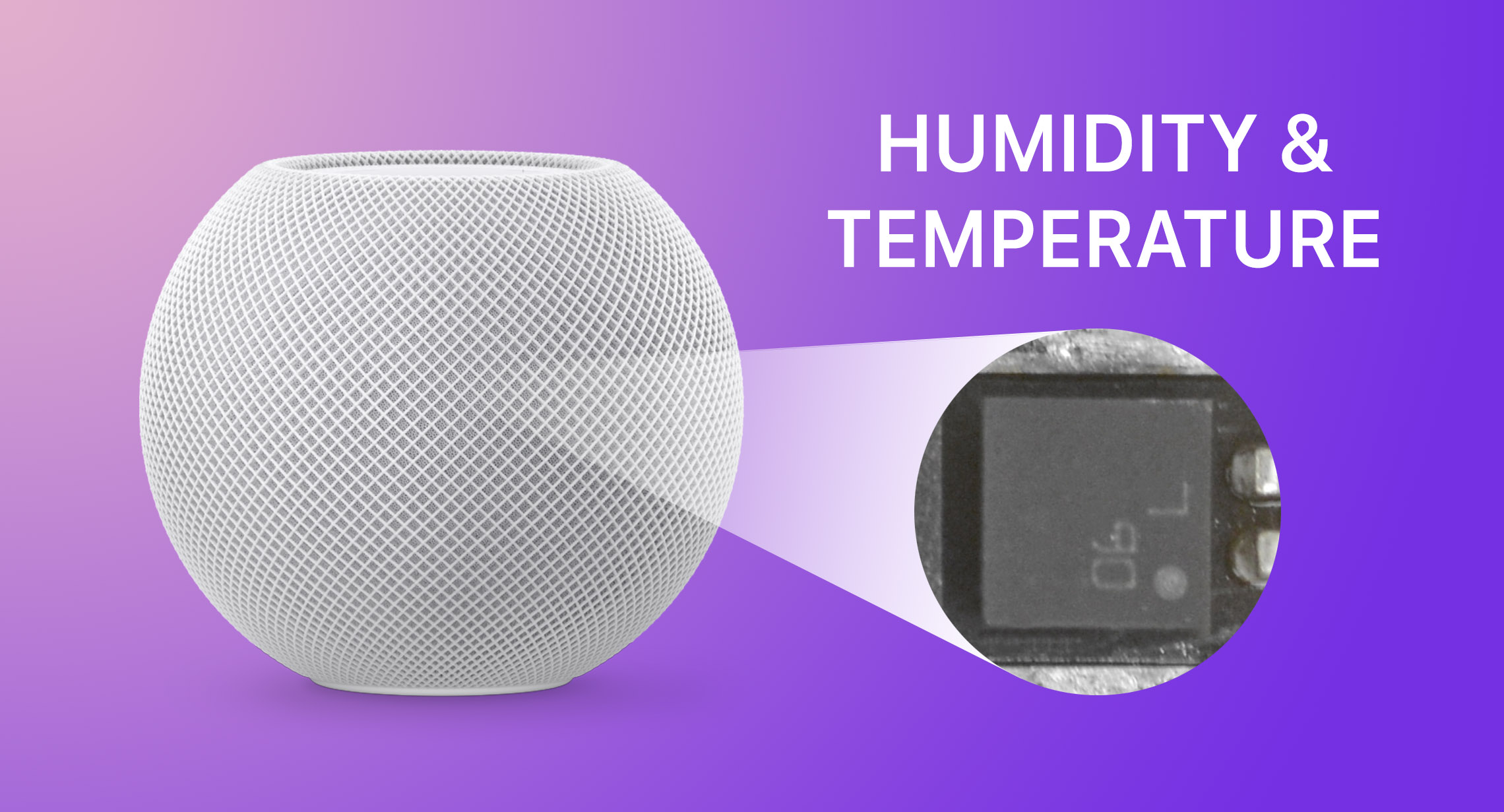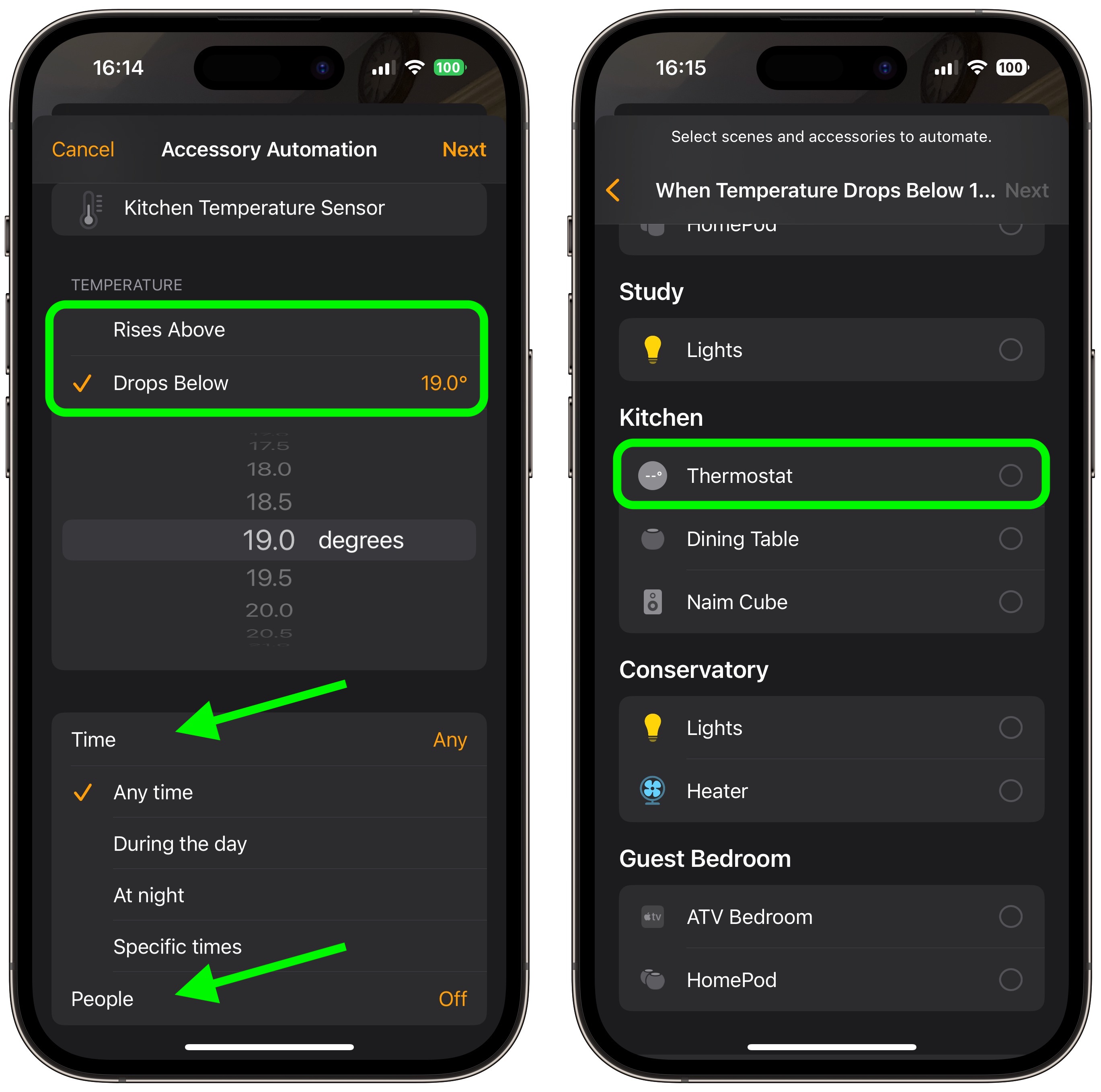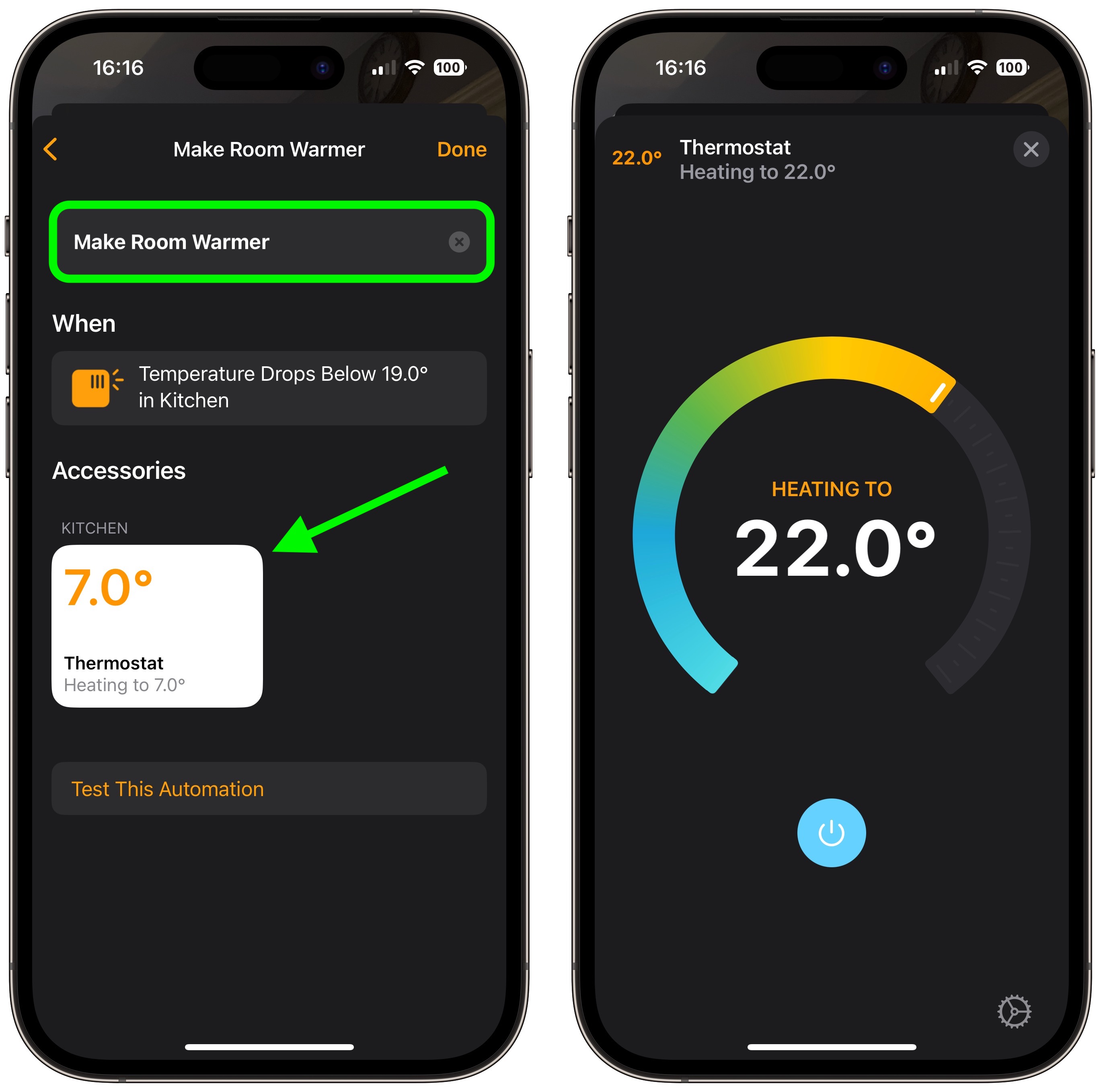While I would normally agree, I share an old family vacation home where the thermostat is strangely and poorly located in the basement. Despite my strong desire to install an Ecobee thermostat like those we love in our own home, moving the thermostat to the living level would be a serious wire-routing chore that I've not yet untaken because I'm supposedly there to relax. However, we do have a HomePod mini in the LR. So now all I will need to do is swap thermostats at the existing basement location to achieve HomeKit temp control for the living level, rather than run any new wires — no more descending into the basement to change the temp!eh, just use a smart thermostat. and i've never seen a humidifier without a humidistat. but cool i guess, more automation is always good.
Got a tip for us?
Let us know
Become a MacRumors Supporter for $50/year with no ads, ability to filter front page stories, and private forums.
How to Set Up Temperature and Humidity Automations on HomePod
- Thread starter MacRumors
- Start date
- Sort by reaction score
You are using an out of date browser. It may not display this or other websites correctly.
You should upgrade or use an alternative browser.
You should upgrade or use an alternative browser.
This can be useful for, for example, reducing the temperature setting on a smart thermostat by a couple degrees I'd humidity rises too high during the summer so the A/C dehumidifies the air.
Of course what is really like to see is a thermostat that works based on "feels like" temperature.
Of course what is really like to see is a thermostat that works based on "feels like" temperature.
Presumably would have another one to turn it down once it hits a certain point, but yeah...could just use a regular thermostat. But... most people's thermostat is only one central location. They could put the HomePod in a room that gets colder quicker and use it to call for heat.So what's the benefit of this complicated automation?
I mean, how often will it even activate? Only once, I guess. Because once the thermostat is set to 22°, it will stay that warm permanently, and it will never trigger again.
Also, let's not limit ourselves to thermostats. This could be used to shut the blinds when it starts getting warm, or to turn on some fans to move the air around.
Conditional rules can be done, but it isn't as intuitive for the average user though.You should also know that the HomeKit protocol, and in particular the conditional rules that are supported, is actually far richer and expansive than the functionality surfaced within the native Home app. For example, within the Home app, you cannot configure a rule that says "At Sunrise, turn on this water feature, but only if the temperature of my garden sensor is > 3 degC". There are similar looking things that come close, which you can create, but not one with that specific conditional structure. If you look at some of the third party apps available there is a heck of a lot more you can do with your HomeKit accessories. For example, using some of the tools you can configure more complex rules, such as the one above, and weirdly they will be displayed correctly by the Home app, although you cannot edit them. You would have thought that Apple, having defined the entire HomeKit protocol, would have created a UI that surfaces all of it. Seems that the UI team are still playing catch up with the rest of the HomeKit system.
Here's one I created directly in the Home app for your example.
You can also do similar things with personal automations in the Shortcuts app.
Last edited:
It would be cool if it did!This is cool. I kinda wish I hadn’t spent $200 on ECOBEE sensors for all my rooms. But I’m not sure if the thermostat can use HomeKit/matter thermometers to adjust the hvac.
Too much technology
In late January, Apple will release a HomePod 16.3 software update that adds humidity and temperature sensing to the second-generation HomePod and all HomePod mini models. This article explains how the features work and what you can do with them.

Apple's new second-generation HomePod features temperature and humidity sensors that can be used to measure the indoor climate. But that's not all. The new 16.3 HomePod software, currently in beta, allows you to run automations based on these measurements.
What's more, the existing HomePod mini has a dormant temperature and humidity sensor that Apple is finally activating with the 16.3 update, allowing the same temperature and humidity settings to be used for home automation and device activation purposes.
Below, we show you how the temperature and humidity sensor information appears in the Home app, and how you can add automations. In our example, after having installed the 16.3 beta on a HomePod mini, we run through the steps needed to activate a thermostat to heat a room whenever it falls below 66.2 degrees Fahrenheit (19 degrees Celsius).
Our automation is now ready to activate the thermostat to heat the room whenever the temperature drops below the specified measurement.
- Open the Home app and select the room where the HomePod mini or second-generation HomePod is located.
- After a short calibration phase on first use, the readouts at the top of the room menu provide live climate measurements. We're going to tap the Temperature readout.
- Tap the Temperature Sensor button in the pop-up menu to access the settings card.
- Tap Add Automation.

Using the dial, choose a temperature level that activates the automation using the Rises Above and Drops Below options.- Use the Time setting to choose from Any time, During the day, At night, or Specific times.
- Use the People setting to choose whether this automation should run based on When I am home or When I am not home. You can also turn this setting off.
- Tap Next, then select the accessory that you want to use with this automation. Here we're selecting Thermostat.

Tap Next, then give your automation a name at the top of the menu and set your accessory to perform an action. Here, we're setting the thermostat to heat the kitchen to 71.6 degrees Fahrenheit, or 22 degrees Celsius.
Tap Done, then tap the X to close the Temperature Sensor settings card.

This is just one example of some of the new features available with the HomePod 16.3 software update. The update also brings users the ability to add remastered ambient sounds to scenes, automations, and alarms, as well as the ability to use Siri to set recurring automations and find people who are in your Find My contacts. Apple is set to release the HomePod 16.3 software update next week ahead of the launch of the new HomePod on February 3.
Article Link: HomePod 16.3 Beta: How to Set Up Temperature and Humidity Automations
I remember a time when I used my body to tell what these values were and here I am today.
12 dollars you didn't have to spend if you already had a homepod mini 😉
Those who think this isn’t useful are missing the point of it just being available in the HomePods and minis (we already have). I have 3, one on each level, and it’s going to be very useful to us. My non-techie wife is excited to be able to ask when upstairs (the thermostat is on the main level).
This is kind'a spooky. Apple is producing a "Heuristically programmed ALgorithmic computer" in the HomePod.
How do I rename "Siri" to "HAL"?
/S-maybe...
How do I rename "Siri" to "HAL"?
/S-maybe...
It’s pretty cool, I have two minis in a stereo pair and it gives you the temperature or humidity range for both.
"Sorry, Dave, but your carbon footprint for this month is large enough. You'll have to just get another blanket."eh, just use a smart thermostat. and i've never seen a humidifier without a humidistat. but cool i guess, more automation is always good.
That’s why I went for Sonos SL. Cheaper, better quality, NO HOME ASSISTANT, works with a plethora of services (of which I only use one) aaaannd I wake up with my own playlist every morning!All that is waaaaaaay more useful in a speaker than hifi audio or stereo playback out of the box or a “wake up to music alarm”.
Of only the closed ecosystem allowed for a simple alarm clock with music… maybe 20 years later. But 1st, VR glasses that nobody asked for…
Yes . . . did you read the article? Or look at it? there's a homepod mini in the image and it literally says "the existing HomePod mini has a dormant temperature and humidity sensor that Apple is finally activating"Does the mini version have this?
All great examples. But within the Home app itself, running fully automatically, you can’t define complex automations which use multiple and/or logical condition. My point is that HomeKit does support this and so do third party home automation apps. But not the native Home app.Conditional rules can be done, but it isn't as intuitive for the average user though.
Here's one I created directly in the Home app for your example.
View attachment 2144748
You can also do similar things with personal automations in the Shortcuts app.
View attachment 2144725
Here’s an example. Home app can kind of get its head around the logic that I have configured and tries to display it. But I cannot edit it nor create this rule in Home. It works, but I have to use a third party tool to create it.
Last edited:
Register on MacRumors! This sidebar will go away, and you'll see fewer ads.


